Dinosaurum avis
The anatomy and incredible nature of this 99 million year old 100% complete, Original Pigments, red dragon bird in amber are evidenced
clearly in this series of 6 simple mobile phone photographs, raw images without any editing or effects. Birds found in amber are often not that obvious to see or understand
as most pieces found are either cloudy, fractured, dark, mangled and the cheapest of all are the flat "pancake birds".
This specimen is totally unique as unlike all specimens found so far in amber this one is totally mindblowing because it comes in crystal clean amber with high transparency that enables us to observe the entire animal and its habitat.
Many inclusions in amber are carbonized and blackened, this specimen however still has the original colors of the animal
and the animal is also intact and unmangled.
In the first picture the 3 small mini digits that occur midwing on Cretaceous flying animals cannot be
seen because they oddly enough point inwards rather than outwards or sideways and so the diagnostic images provided
are taken using different lighting and different angles to reveal them clearly in other images especially Image 2 showing finger bones:
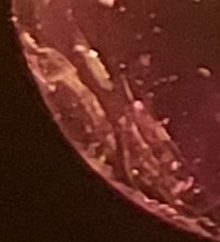
and Image 5 showing fingers with skin: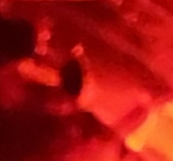
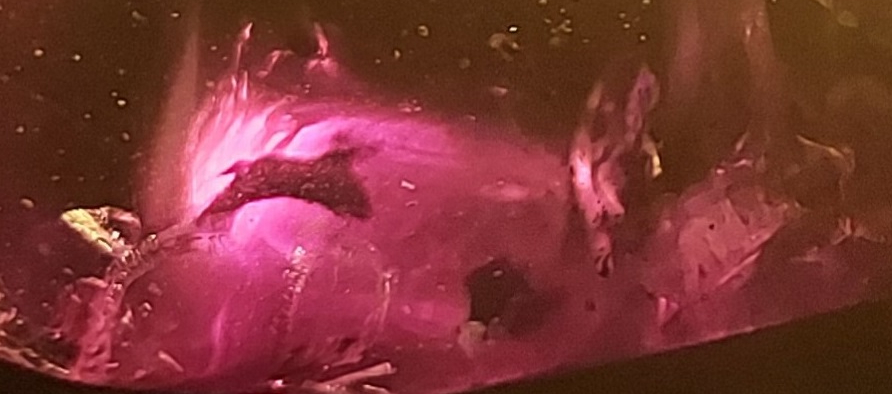
 https://commons.wikimedia.org/wiki/File:Fluorescent_anurognathus_in_amber.jpg
https://commons.wikimedia.org/wiki/File:Anurognathus_in_burmite_amber.jpg
https://commons.wikimedia.org/wiki/File:The_Anurognathid_pterosaur_in_amber_is_backlit_here.jpg
https://commons.wikimedia.org/wiki/File:Fluorescent_anurognathus_in_amber.jpg
https://commons.wikimedia.org/wiki/File:Anurognathus_in_burmite_amber.jpg
https://commons.wikimedia.org/wiki/File:The_Anurognathid_pterosaur_in_amber_is_backlit_here.jpg
https://commons.wikimedia.org/wiki/File:Anurognathid_head_in_amber.jpg
https://commons.wikimedia.org/wiki/File:Backlit_the_Cretaceous_Anurognathid_reveals_otherworldly_anatomy.jpg
https://commons.wikimedia.org/wiki/File:Purple_anurognathid.jpg
https://commons.wikimedia.org/wiki/File:Complete_pterosaur_in_amber.jpg
https://commons.wikimedia.org/wiki/File:Toothy_head_on_red_wing_in_amber.jpg
https://commons.wikimedia.org/wiki/File:Mouth_of_anurognathid_in_amber.jpg
https://commons.wikimedia.org/wiki/File:Anurognatid_pelvis_in_amber.jpg
https://commons.wikimedia.org/wiki/File:Rear_leg_labelled.jpg
https://commons.wikimedia.org/wiki/File:Pterosaur_hips_in_amber.jpg
https://commons.wikimedia.org/wiki/File:Rearfoot.jpg
https://commons.wikimedia.org/wiki/File:Hip_and_leg.jpg
Image 1) The man's hand holding the amber shows how incredibly large this piece of amber is.
The feathers on the wings in natural sunlight range from a metallic copper colour to a scarlet red color and its rear long legs are intact
zooming in on them one can see clearly that they have 4 toes.
In the first picture the 3 small mini digits that occur midwing on Cretaceous flying animals cannot be
seen because they oddly enough point inwards rather than outwards or sideways and so the diagnostic images provided
are taken using different lighting and different angles to reveal them clearly.
Image 2) The second picture is taken in darkness with a backlight and has the angle slightly changed to help show the
3 inward pointing digits mid-wing of the animal and are in the far bottom left of the picture and how the extended digit 4
and patagia has a small animal lying on it with ribs clearly visible in the pink glow apparently giving birth to a smaller animal yet again.
In between the wing and tail of the animal one can also notice a classic avian flight feather falling into the amber
towards the tail from the wing.
The tail of the animal has a cute tip that is typical of many pterosaurian birds but only one of his long legs is clear in this picture.
Image 3) The third picture taken in natural light shows that the skull has a complete set of intact teeth, the tail going above its head
is the tail of the creature laying on its 4th digit as shown in image 2, the ribs of the main animal are shown clearly in this picture too.
This picture shows the unusual "frog shaped" mouth, in nature birds such as nightjars have such frog shaped mouths as does this dino bird,
the Latin word for frog in Anuro and that is why these birds are classified in the family known as Anurognathids
Image 4) By making small changes to the intensity of light it enables us to visualise different aspects of the amber.
The amber itself is actually a golden yellow color but the intensity of the iron rich protein detected in the various
integuments of the animal cause it to fluoresce strongly and glow with different colors under white light it appears neon hot pink
Image 5) The piece is turned over here and in warm light it appears pinkish orange,
if you look carefully at the wing-chord you can see the 3 mini fingers pointing inwards.
The small eyeball that is floating from its socket is still attached to the optic nerve showing the extremely high grade preservation state.
Image 6) Here we show that under white light the dragon bird fluoresces a purple color highlighting not only
the natural history value of the piece but the exquisite beauty of a genuine color changing winged dragon with
claws on both its wings and feet.
Image 1

note this is the rear foot and toenails from the above picture.
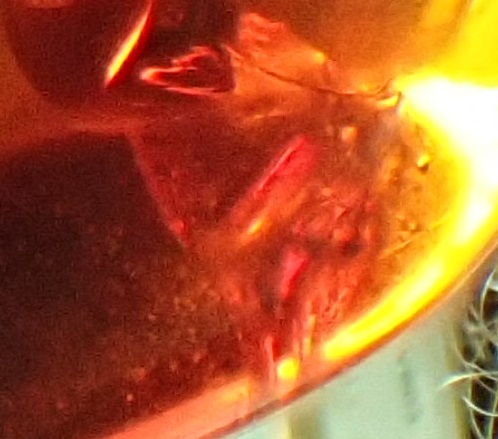
and now here is another picture and the rear 4 toes this time are glowing pink due to the different light

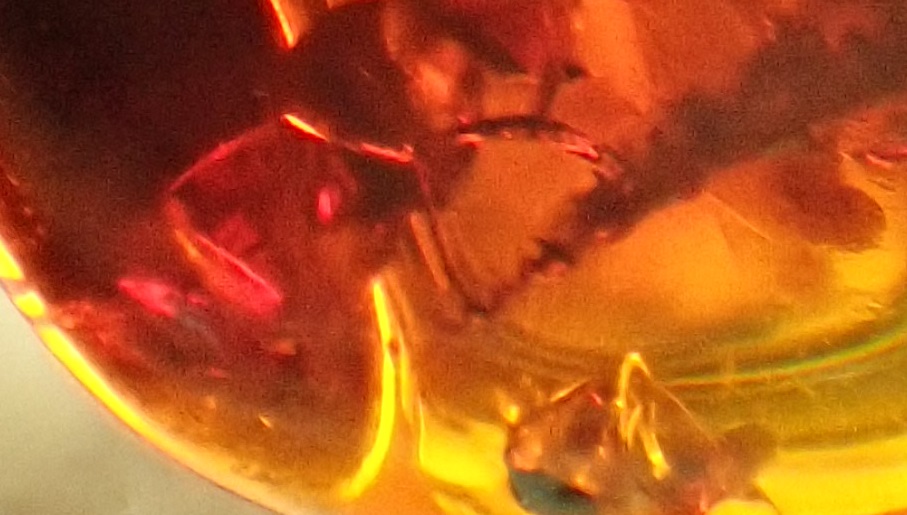

In the following version you can see the 4 toes on the rear leg and the hip bones are very clear, the animal that is lying between his legs is very clear

Image 2

Image 2

Image 3

Image 4

Image 5

Image 6

Cretaceous
99 million years old
Origin: Hukawng Valley, Myanmar (Burma)
Weight: 72.240 grammes / 361.22 carats
Dimensions: 64.00 x 51.10 x 35.46mm
nano-imaging is continually in progress and should you need updates please contact us Further details on this specimen are available upon request and research updates are soon to be uploaded.
“There's many a man who never tells his adventures, for he can't hope to be believed.”
― Arthur Conan Doyle, The Lost World



